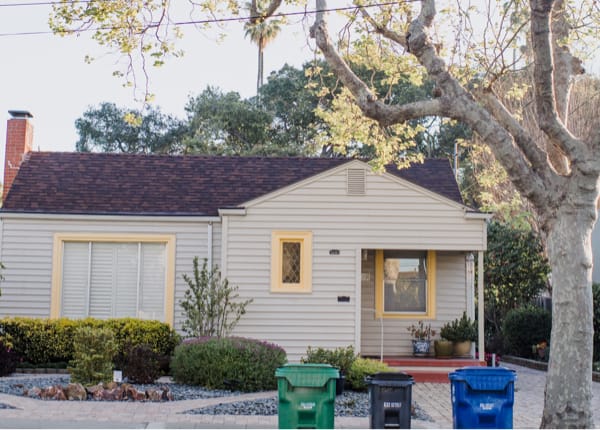Investment Loans > DSCR Loans > How TO Calculate DSCR
How You Can Qualify For A Debt Coverage Service Ratio Loan
Preparing to apply for a DSCR loan can differ from the traditional loan process. Working with an experienced mortgage broker can make your planning, application, and approval streamlined and efficient.
Who can apply for a DSCR Loan?
DSCR loans open doors for a wider range of real estate investors compared to traditional mortgages. Unlike traditional loans that focus heavily on your personal income and employment history, DSCR loans prioritize the property’s ability to generate its own income. This makes them a valuable option for a broader range of investors, including:
- Self-employed individuals: If your income fluctuates or you have complex tax filings, DSCR loans offer an alternative path to qualify for financing. No longer will you be penalized for non-traditional income structures.
- Investors with no current properties: Even if you don’t own any investment properties yet, DSCR loans can be a powerful tool to get you started. By carefully planning your purchase and ensuring the property has strong rental potential, you can qualify for financing based on the projected income of the new investment.
- Investors with only a primary residence: Homeownership doesn’t have to limit your investment possibilities. DSCR loans allow you to leverage the potential of a new income property, even if you already own your primary residence.
- Real estate investment groups: Whether you’re partnering with friends, colleagues, or forming a dedicated investment group, DSCR loans can be used to acquire income-generating properties. The combined financial strength and future income potential of the property take center stage.
In short, if you’re an aspiring or experienced real estate investor with a strong focus on property cash flow, a DSCR loan could be the key to unlocking your investment goals. Even if you’re just starting your investment journey, careful planning and property selection can position you to qualify for a DSCR loan.
What Do Lenders Review for a DSCR Loan?
Unlike traditional mortgages that focus on your personal income history, DSCR loans take a property-centric approach. Here’s what lenders typically review when evaluating your DSCR loan application:
-
Debt Service Coverage Ratio (DSCR): This is the heart of a DSCR loan. It’s a simple calculation that divides the property’s gross monthly rental income by the monthly mortgage payment. A DSCR of 1.2, for instance, means the rental income is 1.2 times greater than the mortgage payment, indicating a 20% buffer to cover expenses and vacancies. Generally, lenders look for a minimum DSCR of 1.1x to 1.25x, with a higher ratio strengthening your application.
-
Credit Score: While not the sole factor, a good credit score (typically 640 or above) demonstrates your financial responsibility and qualifies you for more favorable loan terms with lower interest rates.
-
Down Payment: DSCR loans typically require a down payment of 20-25%. However, some lenders may offer options with lower down payments for applicants with a strong financial profile and a high projected DSCR.
-
Property Type: Not all properties qualify for DSCR loans. Most lenders focus on residential properties like single-family homes, duplexes, and some multi-family units. For commercial properties, you may need to work with a specialized DSCR lender.
By understanding these key factors, you can tailor your DSCR loan application to showcase the property’s strong income potential and increase your chances of approval.
Property Qualifications for a DSCR Loan
While your credit score and financial background are important, the property itself takes center stage with a DSCR loan. Here’s what lenders look for in an investment property:
-
Rental Income Potential: This is paramount. The property should have a proven track record of generating strong rental income, or demonstrate clear potential to achieve the rent needed to meet your DSCR target. Look for historical rental data for comparable properties in the area, or consult with a property manager to get an accurate rental income estimate.
-
Location and Market: Beyond the property itself, the surrounding location matters. Strong rental demand with low vacancy rates is crucial. Research the local rental market to understand rental trends, tenant demographics, and competition from other rental properties.
-
Property Condition: A well-maintained property with minimal ongoing maintenance costs is ideal. Major repairs or renovations can significantly impact your DSCR by eating into your rental income. Lenders prefer properties that are move-in ready or require minor cosmetic updates. Remember, unexpected repairs can significantly affect your cash flow and potentially jeopardize your ability to meet your debt service obligations.
Finding the Right Balance: DSCR loans allow you to qualify for financing based on the property’s income potential, but it’s not just about finding a high rent. The ongoing expenses associated with the property also play a big role. Striking the right balance between rental income and property costs is key to securing a DSCR loan and ensuring the long-term success of your investment.
What to Look For In Properties for a DSCR Loan
Choosing the right property is crucial for a successful DSCR loan application. Here are some key factors to consider when selecting an investment property that optimizes your DSCR ratio:
Location, Location, Location:
Real estate’s golden rule applies equally to DSCR loans. Target locations with a proven track record of high rental demand and stable occupancy rates. Strong rental markets ensure a steady stream of income, reducing the risk of vacancies that can negatively impact your DSCR. Research factors like job growth, demographics, and proximity to amenities that influence rental demand in the area.
Property Condition is Key:
While fixer-uppers may seem like a potential bargain, extensive repairs and renovations can quickly eat into your cash flow and inflate operating expenses. For a DSCR loan, prioritize properties in good condition with minimal ongoing maintenance needs. This keeps your operating expenses predictable and helps maintain a healthy DSCR ratio.
Rental Comps – Do Your Homework:
Don’t underestimate the power of research! Before finalizing on a property, conduct a thorough analysis of comparable properties (comps) in the area. Research similar properties in terms of size, location, and amenities to understand the typical rents they command. This exercise helps you estimate the potential rental income for your chosen property, a critical factor in calculating your DSCR. By aligning your purchase price with achievable rental income, you strengthen your DSCR and demonstrate to the lender the property’s potential for financial success.
Beyond the Basics:
While location, condition, and rental income are fundamental, consider additional factors that can influence your DSCR. Look for properties with features that attract tenants willing to pay premium rents, such as desirable amenities or energy-efficient features that can reduce operating costs. Remember, a DSCR loan is all about the property’s ability to generate income and cover its expenses. Choosing the right property lays the groundwork for a strong DSCR loan application.
Tips on Improving Your Chance of an Approval
While DSCR loans offer a fantastic opportunity for real estate investors, taking steps to strengthen your application can significantly increase your chances of approval. Here are some key strategies to consider:
-
Maximize Your DSCR Ratio: Remember, the higher your DSCR, the better. Explore options to improve your DSCR ratio. This could involve increasing the projected rental income through strategic renovations that attract higher-paying tenants, or by finding ways to decrease estimated expenses by negotiating lower property taxes or securing better insurance rates.
-
Prepare a Strong Application Package: First impressions matter. Put together a comprehensive application package that showcases your investment acumen and preparedness. This should include a detailed business plan for the property, outlining your projected income and expenses, renovation plans (if applicable), and your overall management strategy. If you have experience managing rental properties, highlight your success stories to demonstrate your capabilities.
-
Partner with a DSCR Lender: Not all lenders are created equal. Working with a lender specializing in DSCR loans offers several advantages. They have a deep understanding of the DSCR process and can guide you through the application with tailored advice. Additionally, DSCR lenders often have access to more competitive rates and loan programs that better suit your investment goals.
Beyond these tips, remember:
- Save for a Down Payment: While DSCR loans offer some flexibility on down payments compared to traditional mortgages, having a significant down payment (typically 20-25%) demonstrates your financial commitment to the investment and strengthens your application.
By taking a proactive approach and following these steps, you can significantly improve your chances of securing a DSCR loan and unlocking the door to your real estate investment goals.
We’ve qualified hundreds of borrowers for DSCR Loans
Reach out below to talk to our team of experts about leveraging rental income to qualify for a rental property.
How To Get a DSCR Loan
Learn how DSCR loans work, who can qualify, and how you should plan your DSCR strategy.
How To Calculate The Loan Amount for a DSCR Loan
Learn how you can calculate the loan amount and DSCR ratio of your ideal property and understand your chances of getting approved for that loan.

Let’s Review Your Docs and Make A Plan
Let our team of experts walk through your investment property options to see what you can qualify for.
Understand More About DSCR Loans
Finding the Right Property for a DSCR Loan
Making a profitable portfolio of rental properties requires choosing the best properties for stability and profit. Learn how to advise our clients in choosing the best property for DSCR loans, which includes evaluating the local market, property condition and size, location, maintenance needs and more.
How to Calculate a DSCR Ratio
Understanding your property options and your potential profit means knowing your numbers. The foundation of a DSCR loan is its ratio, so let’s walk through how we (and our lender partners) calculate a Debt Service Coverage Ratio to qualify you for your next investment property.
How to Qualify for a DSCR Loan
While many standard loan programs qualify you based on your own income, DSCR loans work differently. We’ll walk you through the unique process of a DSCR loan and explain the elements that will help you qualify for a DSCR loan.
Learn More About Mortgages
No Doc Mortgage Loans for Self-Employed Borrowers
Bank statement home loans offer relaxed guidelines versus traditional mortgage loans. If you need to acquire funds in a hurry, you might qualify for an asset-based home loan. Abo Capital helps qualified self-employed borrowers obtain no doc mortgage loans. What...
Private Money Lenders in Los Angeles, California
Private money lenders offer financing that’s typically unavailable through traditional banks and mortgage companies. Whether you need a bridge loan or to borrow money from an income producing property, a private money lender is a great resource. You can find...
Mortgage Loans for Self-Employed Home Buyers
Self-employed home buyers can achieve the American Dream of Homeownership. Whether you operate as a limited liability company, a sole proprietor or as an independent contractor, you might qualify for a home loan. Reputable lenders offer affordable...







